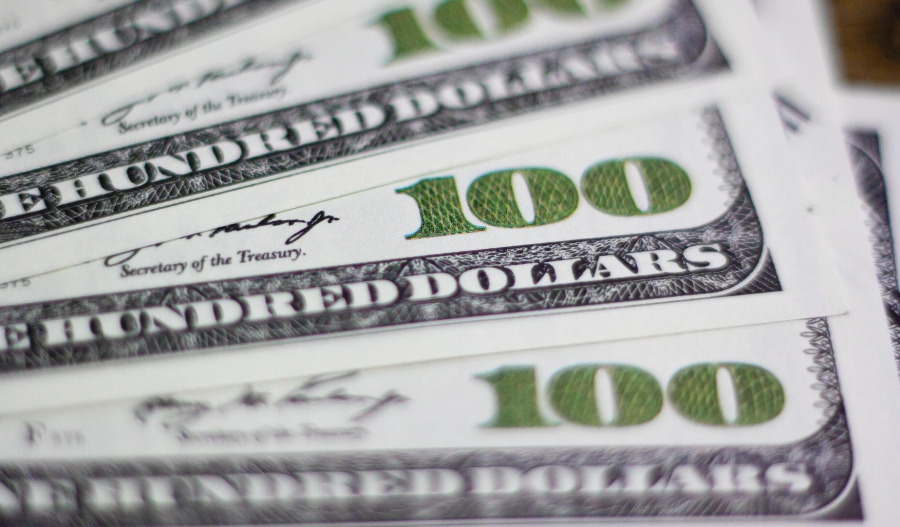The United States dollar softened last week, with the dollar index (DXY) recording its second consecutive weekly decline as political uncertainty and shifting Federal Reserve expectations weighed on sentiment ahead of the Jackson Hole Symposium.
The DXY started the week at 97.8, extending its retreat from July’s push above the 100.00 level.
Losses gathered pace after weak consumer sentiment data and renewed speculation about the Fed’s independence following U.S. President Donald Trump’s escalating criticism of Chair Jerome Powell.
Reports suggesting that Fed Governor Christopher Waller could be elevated as Powell’s replacement further fuelled speculation of a more politically influenced central bank.
Trade tensions provided little relief, with tariffs on India and Russia still possible despite the temporary U.S.–China truce.
Fed officials struck a mixed tone during the week. Richmond Fed President Tom Barkin acknowledged consumer resilience but warned it could eventually weaken demand, while Kansas City Fed’s Jeffrey Schmid favoured patience, saying policy is “appropriately calibrated”.
Atlanta Fed’s Raphael Bostic stressed the luxury of a strong labour market, while Chicago’s Austan Goolsbee remained cautious about assuming tariffs won’t stoke inflation.
Euro Rises, Traders Eye PMI and Inflation Data
The euro extended gains, with the EUR/USD currency pair trading near multi-week highs around 1.17.
Optimism was fuelled by strong U.S. retail sales data offset by weak consumer sentiment, alongside limited progress at the Trump–Putin summit in Anchorage.
Despite being labelled “productive” by Trump, the meeting yielded no breakthrough on Ukraine.
Looking ahead, flash PMIs for the eurozone, along with inflation readings from the bloc and Germany, will shape expectations for the European Central Bank’s next steps. Signs of stabilisation in manufacturing and firming inflation could bolster support for the currency.
Australian Dollar Steady Following Rate Cut
The AUD/USD pair held steady around 0.651, buoyed by U.S. dollar weakness despite solid U.S. retail sales figures. Weaker U.S. consumer sentiment overshadowed the sales data, offering a tailwind for the Aussie.
July retail sales in the U.S. rose 0.5% month-on-month, in line with expectations, though higher prices drove much of the increase.
Meanwhile, the University of Michigan consumer sentiment index dropped sharply to 58.6, fuelling concerns about inflation expectations, which jumped to 4.9% (1-year) and 3.9% (5-year).
At home, the Reserve Bank of Australia’s 25 basis point rate cut to 3.6% was widely anticipated.
With labour market data showing signs of recovery, attention turns to flash PMIs and Powell’s Jackson Hole address for global direction.
British Pound Firms, UK Inflation and Retail Sales Ahead
Sterling edged higher, with GBP/USD pair climbing to 1.355 as the greenback weakened.
Mixed U.S. data drove the move, as July retail sales rose 0.5% but slowed from June’s 0.9%.
Industrial production contracted by 0.1%, missing expectations, while consumer sentiment fell short of forecasts.
The modest lift in the UK’s Consumer Expectations Index to 57.2, above estimates, offered limited support.
Sterling’s performance in the coming week will hinge on UK inflation and retail sales data, alongside global risk sentiment.
Japanese Yen Gains on Strong GDP
The yen gained strength, with USD/JPY pair falling toward 147.10 after stronger Japanese growth data and broad U.S. dollar weakness.
Japan’s Q2 GDP rose 0.3% quarter-on-quarter and 1.0% annualised, well ahead of forecasts, driven by stronger capital expenditure and exports.
By contrast, U.S. retail sales and industrial production signalled softer momentum, while consumer sentiment weakened.
The CME Group FedWatch Tool indicates an 84.6% chance of a 25 basis point Fed rate cut in September, down from nearly full certainty last week.
Japan’s inflation release and the Fed’s Jackson Hole communications will be pivotal in shaping USD/JPY direction in the week ahead.
Economic Calendar Week Ahead
The economic calendar begins on Monday with foreign direct investment figures out of China, eurozone trade data, Canadian housing starts, and the U.S. NAHB housing market index, which will provide an early gauge of housing sector sentiment.
On Tuesday, attention turns to Australia’s Westpac consumer confidence survey, eurozone current account data, and a run of U.S. releases including building permits, housing starts, and Redbook retail sales. Canada will publish its latest consumer inflation report, offering a clearer picture of price dynamics.
Wednesday brings the release of U.S. trade data, speeches from Fed Governor Michelle Bowman, and a closely watched rate decision from the Reserve Bank of New Zealand.
Japan posts its trade balance, imports, and exports, while China announces its loan prime rate. Key inflation readings are also due from the UK and the euro area, alongside Canada’s new housing price index.
On Thursday, global attention will be on a series of flash PMI reports across major economies, including Australia, Japan, the eurozone, the UK, and Canada.
In the U.S., speeches from Fed officials Christopher Waller and Raphael Bostic, the release of FOMC minutes, and the opening of the Jackson Hole Symposium will dominate. South Korea will publish producer price inflation.
The week closes on Friday with eurozone consumer confidence, U.S. existing home sales and the Fed’s balance sheet, Japan’s national CPI, UK retail sales, EU wage growth data, and Canadian retail sales.
Finally, on Saturday, Fed Chair Jerome Powell will deliver his keynote address at Jackson Hole, a speech that could set the direction of global monetary policy and currencies into the autumn.



